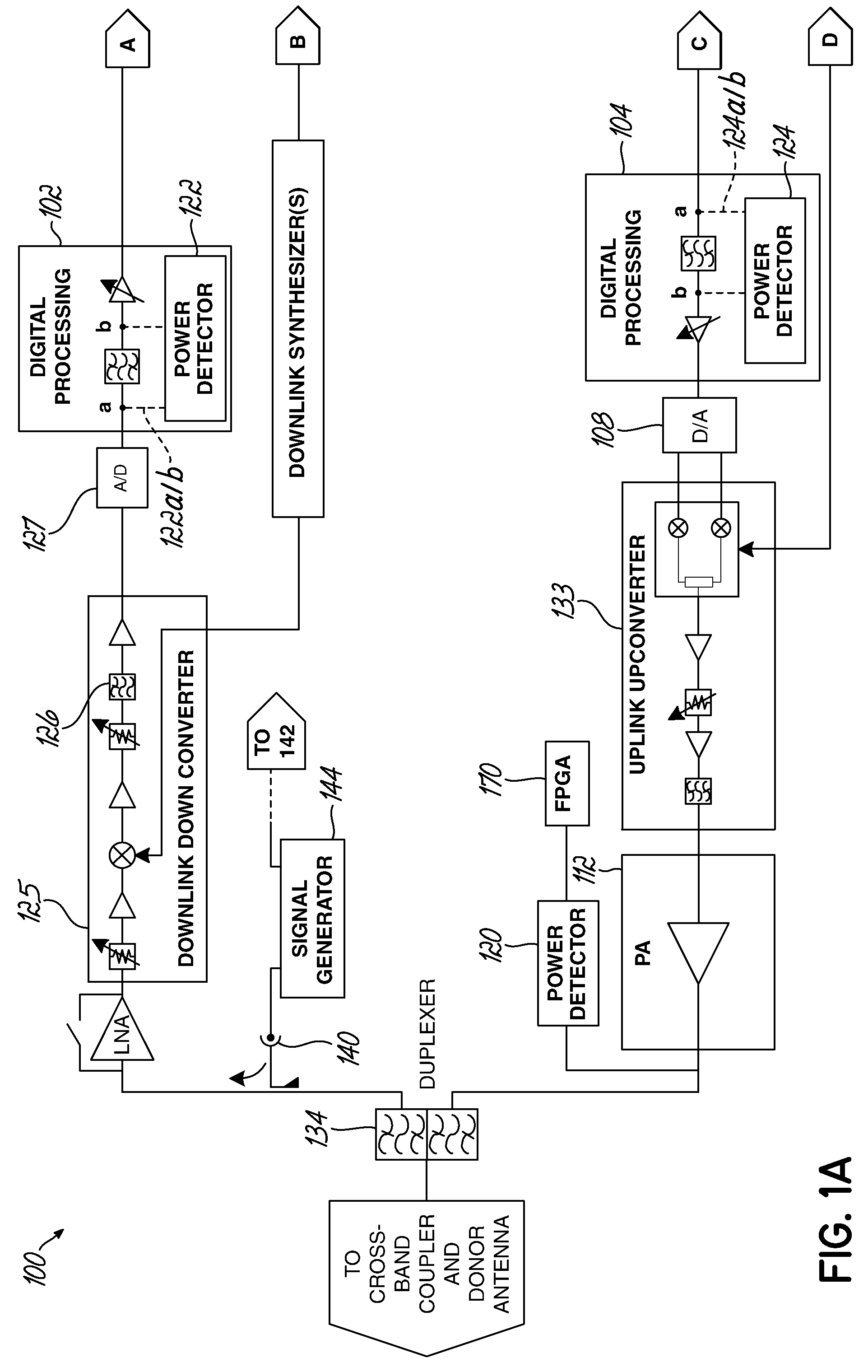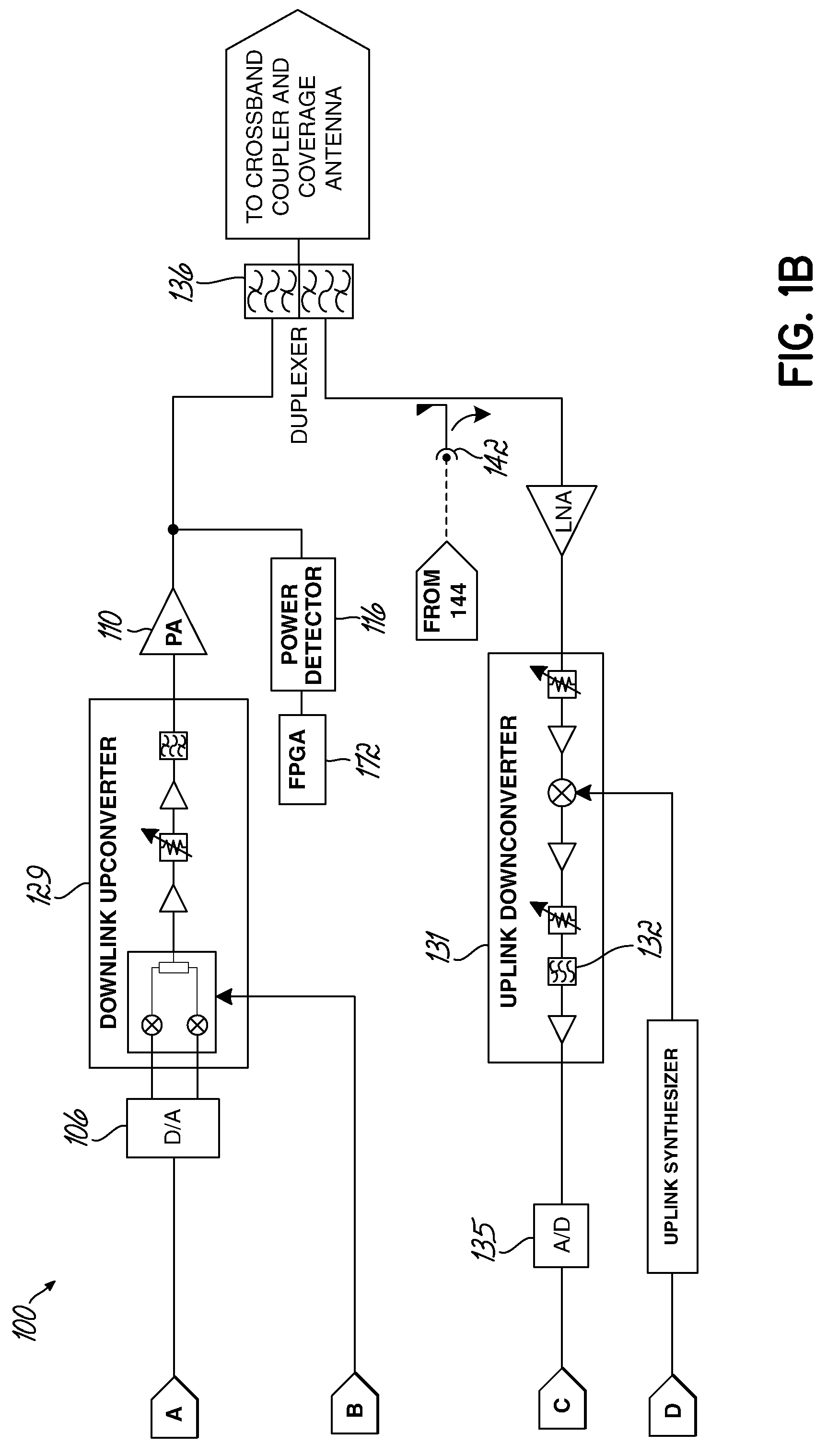Gain measurement and monitoring for wireless communication systems
a wireless communication system and gain measurement technology, applied in the direction of transmission monitoring, receiver monitoring, electrical equipment, etc., can solve the problem that the output power of the repeater at any given time is inadequate to ensure proper operation
- Summary
- Abstract
- Description
- Claims
- Application Information
AI Technical Summary
Benefits of technology
Problems solved by technology
Method used
Image
Examples
Embodiment Construction
[0021]Embodiments of the present invention are directed to an apparatus and method of measuring or monitoring gain in a wireless communication system. Measurements of gain may be used for additional diagnostics, such as fault detection. For example, service providers are interested in knowing whether an amplifier in the communication system has blown or whether another component has failed, such that the communication system is not operating properly, in order to quickly service or replace the repeater or component. Some contemporary communication systems use power detectors to monitor or measure output power; however, such solutions cannot measure total system gain or identify fault conditions in a repeater because the input signal level is not known. A second detector could be placed at the repeater input, but this solution would be expensive due to the additional hardware and high dynamic range required. Instead, the various embodiments of the present invention offer lower cost s...
PUM
 Login to View More
Login to View More Abstract
Description
Claims
Application Information
 Login to View More
Login to View More - R&D
- Intellectual Property
- Life Sciences
- Materials
- Tech Scout
- Unparalleled Data Quality
- Higher Quality Content
- 60% Fewer Hallucinations
Browse by: Latest US Patents, China's latest patents, Technical Efficacy Thesaurus, Application Domain, Technology Topic, Popular Technical Reports.
© 2025 PatSnap. All rights reserved.Legal|Privacy policy|Modern Slavery Act Transparency Statement|Sitemap|About US| Contact US: help@patsnap.com



